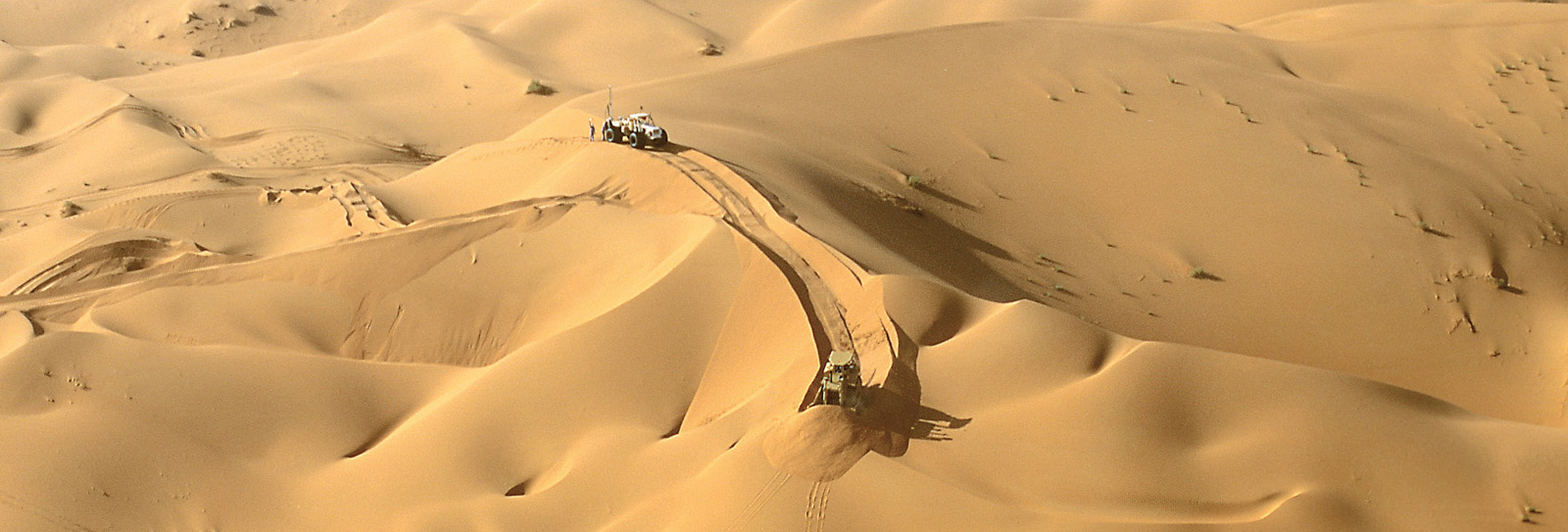
FirstLook: A Lens and a Legacy
1
Photograph by Shaikh Amin
Written by Arthur P. Clark
As a young man in 1948, Shaikh Amin traveled from newly established Pakistan to accept a job in the storehouse of Aramco in Dhahran, Saudi Arabia.

He had put away part of his salary, and within a few years of joining the oil company, he saved enough money to buy a Rolleicord twin-lens reflex camera. He enrolled in a photography course by correspondence from the US and began to pick up freelance jobs, and in 1965 he qualified for a trainee post with the company’s Photo Unit. He rose quickly to become chief photographer, and even after he retired in 1985, he returned annually on special assignments for another nine years, becoming one of the most prolific photographers of one of the world’s most dramatic industrial transformations: the “oil boom” decades in Saudi Arabia.
Pipelines, refineries, wells, exploration teams and the communities of people who built and formed them became his daily assignments amid the constant challenges of heat, blowing sand and other adversities. This aerial image, shot in 1993, shows one of Aramco’s deep-desert road-building teams carving over and around 100-meter dunes in the eastern reaches of the Rub al-Khali, or Empty Quarter, on the way to Shaybah, the most remote oilfield in Saudi Arabia. Whether in the air over dunes or balanced on the shoulders of fellow pilgrims while shooting for AramcoWorld in Makkah, Amin brought his artistic eye and unflappable optimism to every job he undertook.
He died July 17, at the age of 93, having recently received one more honor for the kinds of photos—of flowers, people and places—that he enjoyed making in his retirement. In all, he received more than 70 ribbons and medals from photo societies around the globe, and three awards from the UN.
“My original thinking was that I should be a good photographer, learning as well as doing a good job,” he said. “People liked me and appreciated my work, and that’s what I wanted.”
—Arthur P. Clark recently retired from his position as an assistant editor of AramcoWorld. For many years in Dhahran, he worked closely with Shaikh Amin.
Photographs by Shaikh Amin can be found in the AramcoWorld image archive.
You may also be interested in...

First Look: The Color of Nubia in Aswan
Arts
As a Saudi photographer with a passion for cultural, human and heritage themes around the world, I strive to make my images windows to the past as well as reflections of the present. When I came across this guesthouse on a visit to Aswan, Egypt, I was taken back to 3000 BCE to ancient Nubia.
FirstLook: "Arabs In America: Native Sons"
Arts
In 1975 AramcoWorld dedicated an entire issue to celebrating the lives of Arab Americans and their impact—from renowned heart surgeon Michael DeBakey to White House correspondent Helen Thomas to entertainer and St. Jude Children’s Research Hospital founder Danny Thomas.
All the Lands Were Sea
History
Arts
In late 1967, photographer Tor Eigoland traveled for more than: a month, mostly by canoe, among the countless villages of southern Iraq's vast marshes. Now, 45 years later, writer Anthony Sattin calls his photographs a "rare and ethnographic record of a lost world. They bring us back to a time and place where people lived in harmony with their environment and respected the balance the natural world needs to thrive.'